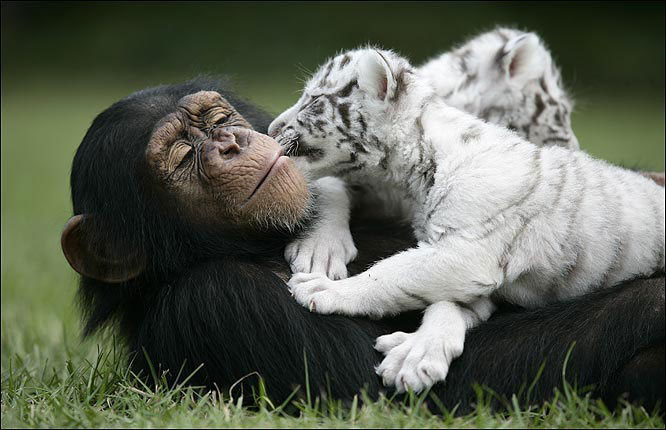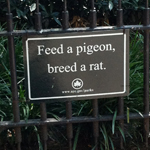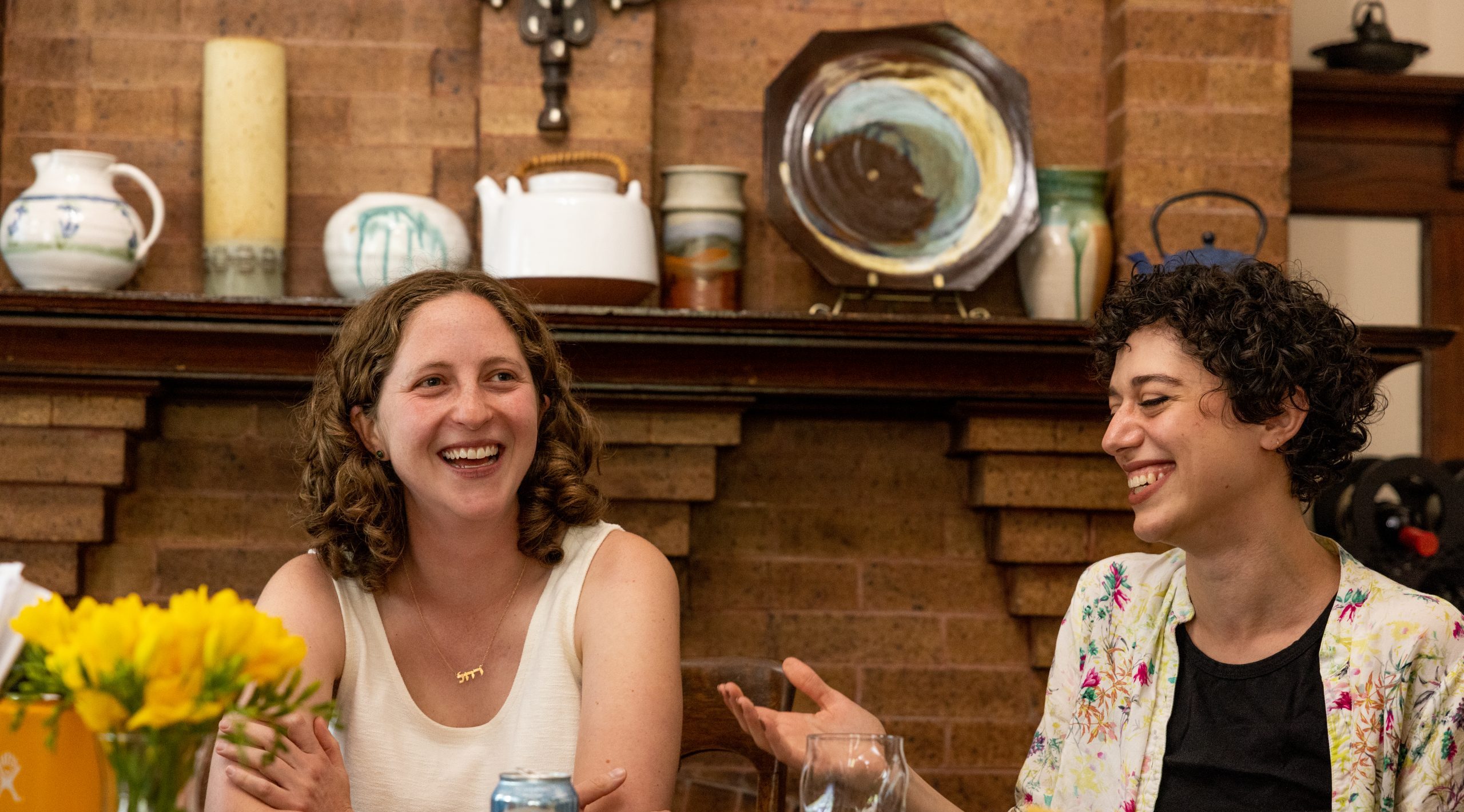
Nov 1, 2017 | by Rabbi Lisa Goldstein, Former Executive Director, Institute for Jewish Spirituality

My husband and I are almost finished with a course that is preparing us to be foster parents. Neither one of us has parented before and we are eagerly learning the theories that will hopefully help us once we have been certified and can bring children into our home.
For example, we know that children who have been removed from their families of origin carry with them various levels of trauma. Traumatic experiences are written on our bodies and expressed through them, even in the youngest children. The destructive behaviors that foster children sometimes exhibit often stem from rage or grief. Our teacher emphasizes that in children behaviors are indicators of feelings, and it is part of our role (and our privilege) as the caregivers to them to help children name the difficult feelings and try to find other, more wholesome ways of express those feelings.
Of course, this is not just true of traumatized children. We all carry the marks of our emotions in our bodies, and may struggle to recognize them – in ourselves as much as in others. So much of mindfulness practice is about creating a spaciousness in which we can better discern what the underlying feeling is, how it expresses itself in the body, how it might move and change, and how we might respond in the wisest way possible.
Because we know from our own practice how hard that can be, and because we are learning how much suffering foster children have been through, we expect that it should be easy to bring empathy to them – at least in the abstract. But I find myself sitting with a feeling of apprehension, a worry that we will be caught in our own need to be seen and heard, and unable to see the true emotions our foster children are trying to show us.
But isn’t that exactly the challenge? It is easy to bring a loving heart to others as long as our own vulnerabilities don’t get touched. And yet, how can we bring a loving heart without our vulnerabilities? What kind of practice do we need to keep our hearts open even when we are triggered, even when we are scared, even when we are frustrated and angry?
Perhaps one answer is setting aside a particular time for crying out. I recently studied a passage from Likkutei Halachot which said that on the spiritual realm, nothing stands in the way of crying out and teshuvah (repentance). In fact, crying out is a worthy act even after the Divine judgment has been made and in some cases, it can actually undo that judgment.
When we cry out and actually feel our own pain, we have the opportunity to bring compassion to our own weary, aching hearts. We can take off the brave faces we wear. We can open ourselves to the not-so-pretty, not-so-balanced side of emotional expression. We too can grieve and rage, and recognize the grief and rage in others.
And perhaps, slowly, we can find healing.

Oct 19, 2017 | by Rabbi Lisa Goldstein, Former Executive Director, Institute for Jewish Spirituality

A number of years ago, I approached the High Holy Days with a great sense of inadequacy. I was keenly aware of all the ways in which I missed the mark, that I fell short of my own expectations and that I was unable to keep to my intention. It was a sobering and unpleasant realization.
As I was working with this sense of inadequacy, I was looking forward to the part of the Rosh Hashanah service that includes a full prostration. Not every synagogue does this, but traditionally, during the Malkhut section of the shofar service, we recite the Aleinu. As we say the words “We bend the knee and bow before You,” some communities engage in a full bowing, sinking to our knees and lowering our heads to the floor, in a deep motion of submission to the King of Kings (or, if you prefer, all that we cannot control in our fragile lives.)
I was anticipating this embodied experience to be one of humility, of publically acknowledging my imperfection on this holy day. But instead something surprising happened.
As I touched my head to the floor, what rushed through me was not a confirmation of my unworthiness, but rather a wave of forgiveness. This is how human beings are, imperfect, I recognized anew, and I am no different. And it is okay. Forgiveness is possible, even forgiveness of ourselves, and with that softening, we are actually more free to move through the world in sacred ways.
I suspect that many of us will hear sermons this High Holy Day season about the urgency of the work there is to do in the world – and it is in fact urgent. But perhaps we can find the space to practice forgiveness for our own sweet selves, for not living up to our expectations and not doing enough and not doing what we do perfectly. After all, as we are reminded in Unetaneh Tokef, we are compared to a broken dish, a breeze passing by, a grass that withers. And perhaps it is precisely because of our vulnerability and our imperfection that we are so precious and so worthy of compassion.
May we find forgiveness for our own humanity so that 5778 might be filled with blessings, sweetness and peace for us and for the world.
May 8, 2013 | by Rabbi Lisa Goldstein, Former Executive Director, Institute for Jewish Spirituality

I have a very exciting announcement to make.
But first, let me set the stage. We have long believed that cultivating mindful Jewish leaders could have a profound and even transformational impact on Jewish communal life. However, one of the persistent questions we have struggled with has been how to help alumni of our cohort programs transmit the practices that we have found so personally meaningful to their communities who are also seeking. The obstacles are many: overwhelming busy-ness, a lack of confidence in teaching the practices, Jewish organizational culture, lack of support, just to name a few.
Over the years, we have developed various tools to help address these obstacles. Starting this fall, we will have a new one to add to our repertoire.
The John Templeton Foundation has given us a major grant to support an innovative, national program to promote character development through mindfulness and tikkun middot practice in targeted Jewish communities led by Institute-trained rabbis, cantors, educators, mindfulness teachers, and community leaders. Over the next three years, we will work with 28 Jewish communities to bring a mindful approach to cultivating desirable behaviors or character traits (such as generosity, patience, truth-telling and humility) into the culture of these communities.
There are three significant innovations to this program. The first is that we will be providing training to help leaders bring a specific practice to their communities in a way that reflects the unique culture and realities of that particular community. Participants in the program will be given curricula, in-person trainings, regular webinar support and targeted consultations, all with the support of the other members of the cohort. Secondly, we will be exploring what happens when we make a systemic connection between strengthening individual character development and communal norms and culture. This will give us the opportunity to learn more about how transformation works along the spectrum of change within an individual, in interpersonal relationships, in institutions and in society at large. And thirdly, we will be pioneering a new approach to mussar that is grounded in mindfulness practice.
Rabbi Marc Margolius will be the director of the program. For more information, please visit the program page.
That a non-Jewish foundation with the clout of the Templeton Foundation has decided to invest in our exploration is just thrilling. We are hopeful that this will significantly improve the tools we can offer our alumni in helping to revitalize Jewish life.
For more information on the Templeton Foundation’s work, please click here.

Feb 13, 2013 | by Rabbi Lisa Goldstein, Former Executive Director, Institute for Jewish Spirituality

It is interesting that it took a snowstorm to turn New York City into Jerusalem on a Friday evening.
Like many people who have spent time in Jerusalem, one of things I love the most is the way Friday afternoons come into the Jewish parts of the city. Bit by bit, the stores close and the roads empty out. The sounds of the usual bustle begin to subside and a calm begins to pervade the squares and streets. By the time the sun sets over the plain below, it can feel like the whole city has taken a deep breath and let it out slowly.
Last Friday, with the approach of Snowstorm Nemo, New York City could have been Jerusalem. Sleet was falling in the afternoon and people began leaving, getting to where they would stay for the duration of the storm. Even in Midtown, where our office is, bit by bit, there were fewer cars, less honking and sirens. We closed the office a little early. And by the time the snow began to fall in earnest, later in the evening, as I was on my way to Shabbat dinner, there was a magical hush everywhere. The streets were mostly empty except for people walking, some with their dogs. The glow from the strings of left-over holiday lights caught the softly falling snow. The usually frantic city felt soothed and quiet.
One of the things I love about New York City is the wonderful energy and astonishing abundance of people and buildings and things to do and see and eat and explore. There is usually no stopping it or even any desire to stop it. But on this Erev Shabbat, it seemed like the city shavat vayinafash – stopped and took a breath.
By Shabbat morning the sun was shining and the sky was blue. I made my way to Central Park to explore the snowy woods and to watch the kids (of all ages!) playing in the snow. New York was returning to itself: noisy, colorful, vibrant. Yet, the magic of the snow stayed all through Shabbat. It wasn’t until Sunday that there was more gray slush than pristine fields of snow – just in time for a new workaday beginning to the week.

Aug 29, 2012 | by Rabbi Lisa Goldstein, Former Executive Director, Institute for Jewish Spirituality

Earlier in the summer, I went to Roosevelt Island. There is a red tram that takes you from the east side of Manhattan, up, over the Queensboro Bridge and the East River and then down to the island. It’s great fun.
I was early to meet my friend and so I waited at the tram depot on the Manhattan side for a while. The little plaza by the station was one of those strange places that for some reason attracts pigeons by the hundreds. My eye was caught by a sign that the New York City Department of Parks and Recreation posted on a fence: “Feed a Pigeon. Breed a Rat.” (And just for the record, I did indeed spy a rat, roughly the size of a pigeon, scurrying beneath the rose bushes.)
The sign reminded me of a classic teaching story that I first heard from Sheila Weinberg. A Native American elder is teaching a group of children, sitting at his feet. He says, “There are two wolves. One is filled with rage and hatred and blame and fear. The other is filled with compassion and forgiveness and peacefulness and faith. These two wolves are fighting. And they are inside me.”
One of the children asks anxiously, “Which wolf will win?”
The elder solemnly replies, “Whichever one I feed.”
In my experience, my more negative thought patterns are very similar to feeding rats and pigeons. I have no desire to feed the rats. But pigeons are innocuous. I find them  dirty and slightly menacing in a weird way, but they’re certainly not on the same level as rats. In the same way, I don’t intend to hold on to things that make me angry, hateful, fearful or judgmental. But I certainly can find myself nursing small grudges or injustices that seem innocuous.
dirty and slightly menacing in a weird way, but they’re certainly not on the same level as rats. In the same way, I don’t intend to hold on to things that make me angry, hateful, fearful or judgmental. But I certainly can find myself nursing small grudges or injustices that seem innocuous.
But in fact, they are not. The New York City Department of Parks and Recreation is exactly right. Feed a pigeon, breed a rat. Cling to that grievance and it inadvertently may shape my thoughts towards something much darker and unwanted.
Of course, there is a place in the world for all kinds of animals, even those we call pests, and anger, fear and hatred are unavoidable – and occasionally even useful – human experiences. It’s a question of appropriateness and discernment. Perhaps the first place we can stop “feeding the pigeons” is with ourselves – by bringing compassion, forgiveness and faith to our mind’s endless capacity for holding on when we might let go.











